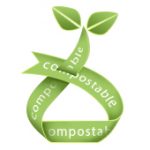How is True Cellophane Made?
Unlike man-made plastic polymers, which are largely derived from petroleum, cellophane is a natural polymer made from cellulose, a component of plants & trees. It is made from digested wood & cotton pulp that undergoes a series of chemical baths that remove impurities & break the long, fibrous chains in the raw materials. While cellulose is regenerated as a clear, shiny film with plasticizing chemicals added for flexibility, it is primarily composed of crystalline cellulose molecules. This means it can biodegrade with the assistance of micro-organisms in the soil, just as leaves and plants do.
Cellophane is one of the oldest, clear packaging materials used to pack food. It was first marketed in the US in 1924. In the 1960s, a new breed of “cellophane-style” film, called Polypropylene (PP), gained popularity because of its low cost to manufacture, its abundance & its superior barrier properties. At this point, cello bags & cellophane bags came to reference both true cellophane (made of wood) & BOPP (bi-axially oriented polypropylene).
Biodegradable & Compostable?
Tests have shown that, when buried or composted, uncoated cellulose film typically breaks down in an average of 28 to 60 days. Coated cellulose breakdown ranges from 80 to 120 days. (In lake water, the average bio-degradation for uncoated is 10 days and 30 days for coated.) Unlike true cellulose, BOPP film is not biodegradable, but rather, it is recyclable. BOPP remains inert when discarded, and it does not leach any toxins into the soil or water table. Unlike true cellulose, BOPP film is not biodegradable, but rather, it is recyclable. BOPP remains inert when discarded, and it does not leach any toxins into the soil or water table.
True cellophane is making a comeback today due to green awareness & Eco-friendly markets. It is 100% biodegradable & is seen by many as a more earth-friendly packaging material than BOPP.


